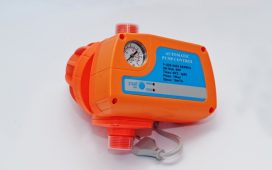In the world of industrial automation and critical infrastructure, reliability is not a feature—it is a requirement. Selecting a 5g router outdoor based on consumer-grade specifications is a significant risk. Instead, engineers and procurement specialists rely on a set of internationally recognized standards and certifications. These benchmarks provide an objective measure of a device’s ability to withstand harsh environments, resist cyber threats, and ensure seamless interoperability. Understanding these certifications is crucial for selecting a router that will deliver performance, security, and longevity. Here are the top 10 detailed industry standards and certifications for industrial routers.
1. IEC 62443: The Cybersecurity Benchmark for Industrial Automation and Control Systems (IACS)
The Standard: The definitive series of standards for securing Operational Technology (OT) networks. The Details: IEC 62443 moves beyond IT security to address the unique needs of industrial environments. For a router, certification at a specific Security Level (SL)—such as SL 2 or 3—is critical. This means the device has been independently assessed to ensure it includes:- Secure development lifecycle practices.
- Robust authentication and access control.
- Secure remote access capabilities (e.g., VPNs).
- Effective patch management. A router certified to IEC 62443 provides assurance that it is a hardened component designed to protect critical infrastructure from cyber-physical attacks.
2. IP Rating (IEC 60529): Ingress Protection Against Solids and Liquids
- First Digit (Solid Particle Protection):A “6” indicates complete protection against dust ingress, which is essential for gritty industrial environments like grain silos or mining operations.
- Second Digit (Liquid Ingress Protection):A “5” protects against low-pressure water jets, while a “7” allows for temporary immersion in water. A rating of IP65 is typical for routers mounted in wash-down areas or outdoor enclosures exposed to rain.
3. UL/cUL Listing and ATEX/IECEx for Hazardous Locations
- UL/cUL (USA/Canada):A UL Listing (e.g., to UL 60950-1 or UL 62368-1) means the product has been tested by Underwriters Laboratories and meets specific safety standards, reducing the risk of fire or electrical shock.
- ATEX (EU) / IECEx (International):These are critical for hazardous locations where flammable gases, vapors, or dust may be present. A router with an ATEX Zone 2 certification, for example, is designed not to produce sparks or surface temperatures that could ignite a surrounding explosive atmosphere, making it safe for use in oil and gas refineries or chemical plants.
4. NEMA Ratings: The North American Environmental Equivalent
The Standard: A rating system by the National Electrical Manufacturers Association that defines the types of environments in which an electrical enclosure can be used. The Details: While similar to IP ratings, NEMA ratings are more common in North America and often include additional factors like corrosion resistance and construction practices. A NEMA 4X enclosure, for instance, is water-tight (resistant to hose-directed water), dust-tight, and corrosion-resistant, making it suitable for food and beverage processing or coastal applications.5. CE and UKCA Marking: Mandatory Market Access for Europe and UK
The Standard: Legal declarations that a product meets the health, safety, and environmental protection requirements for sale in the European Economic Area and Great Britain. The Details: While often seen as a basic requirement, the CE (Conformité Européenne) and UKCA (UK Conformity Assessed) marks are not optional. They indicate the manufacturer has assessed the router against relevant EU/UK directives, such as the Electromagnetic Compatibility (EMC) Directive and the Low Voltage Directive (LVD). This ensures the router will not interfere with other equipment and is electrically safe.6. FCC Part 15: US Regulation for Electromagnetic Interference
The Standard: A rule from the Federal Communications Commission regulating unintentional radiators to control electromagnetic interference. The Details: For a router to be sold and operated in the United States, it must be tested and certified to comply with FCC Part 15. This certification verifies that the device’s electromagnetic emissions are within acceptable limits, preventing it from disrupting critical communications like radio, television, or other wireless services. Compliance is a fundamental legal requirement.7. DNV/GL and ABS Type Approval for Maritime Applications
The Standard: Certifications from leading maritime classification societies (e.g., DNV, American Bureau of Shipping). **The Details: The maritime environment is exceptionally harsh, with constant vibration, salt spray, and wide temperature swings. Type Approval from a society like DNV-GL means the router has passed rigorous environmental, EMC, and safety testing specific to shipboard and offshore platform use. This is a non-negotiable requirement for any communication equipment used in the shipping, oil & gas, and offshore wind industries.8. IEEE 1588 (Precision Time Protocol – PTP) for Time-Sensitive Networking
The Standard: A protocol used to synchronize clocks throughout a computer network with microsecond precision. The Details: While a protocol, not a product certification, support for IEEE 1588 PTP is a critical feature standard for industrial routers. In applications like power utilities (for synchrophasors), factory automation, and telecommunications, having a perfectly synchronized network is essential. A router acting as a PTP Transparent Clock or Boundary Clock can precisely time-stamp and forward PTP packets, ensuring sub-microsecond synchronization across the network.9. MIL-STD-810H: Environmental Engineering Considerations and Laboratory Tests
The Standard: A U.S. military standard that defines test methods for determining equipment’s resistance to environmental stresses. The Details: While not a certification (it’s a test method), a router “tested to MIL-STD-810H” has been validated against a suite of extreme conditions. Relevant test methods include:- Method 500.6 – Low Pressure (Altitude):For high-altitude deployments.
- Method 514.8 – Vibration:For mounting on vehicles or heavy machinery.
- Method 501.7 – High Temperature & Method 502.7 – Low Temperature:For extreme climates. This testing provides a high degree of confidence in the router’s physical durability.













